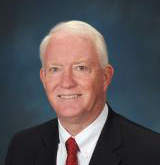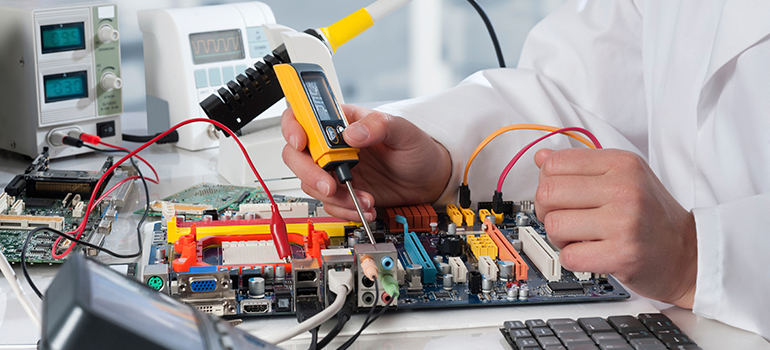Evolving Regulations for Commercial Refrigeration Energy Efficiency

An overview of how recent, significant regulatory changes in energy efficiency and alternative refrigerants that will impact the commercial refrigeration industry.
10 February 2015
The commercial refrigeration industry is seeing significant regulatory changes, with a strong focus on energy efficiency and alternative refrigerants. In this article, Part 1 of a series, Intertek will offer an overview of recent and upcoming changes impacting the industry, specifically product manufacturers.
Department of Energy Changes
In 2014, the U.S. Department of Energy (DOE) issued a number of new standards, test procedures, and rules, including changes for commercial refrigeration. However, due to shifting definitions and the diversity of the market, it has been challenging for manufacturers to meet these requirements.
Commercial Refrigeration Equipment: The DOE developed a regulation in 2009 that caps energy usage by product category, and manufacturers are required to post on the DOE's website by the end of 2014 to mid-2015 in order to demonstrate compliance. The DOE issued a Direct Final Rule for Energy Conservation Standards (ECS) on March 28, 2014, that has Maximum Daily Energy Conservation (MDEC) requirements reduced by 30% for some categories and 60% for others, depending on how the new definition is applied to particular products. Manufacturers also need to consider in early design phases that the modified products must still conform to ANSI/UL, NSF, or any other applicable regional or global requirements.
By 2017 this regulation will likely evolve again to lower the energy consumption cap. Manufacturers have already invested significant time and resources to comply with the current requirements of this regulation, and this effort will need to continue through 2017.
Walk-In Refrigeration: These products typically include cooler, door, and panel components in addition to the refrigeration system, and the test procedure in place is seen by many as difficult to run. To address this, in 2014 the DOE submitted regulation that creates new efficiency standards for walk-ins called Average Walk-In Energy Factor (AWEF). AWEF is measured as yearly average refrigeration output versus energy input. The purpose of this ruling is to focus on the installation and the refrigeration elements of the product. Compliance will be required by 2017. The industry needs to become familiar with this standard, including what AWEF values are, how the test is conducted, and how the standards will be applied.
Commercial Ice Machines: The DOE proposed a regulation in 2014 that creates new maximum energy usage requirements for these products, with implementation targeted for 2018. As a result of this ruling, we will likely see the industry need to reshape itself in order to meet these regulations.
Environmental Protection Agency Changes
The U.S. Environmental Protection Agency (EPA) manages the ENERGY STAR® program, which revamped its commercial refrigeration guidelines (version 3.0) with an October 1, 2014, deadline. Changes included were updated product classes, new definitions for manufacturers, and higher efficiency metrics. Product redesign may be needed, and updates will likely be required for ANSI/UL and NSF certifications, among others. As the industry struggles with this recent change, many product families have already lost ENERGY STAR certification and have since been dropped from the ENERGY STAR website.
The EPA also operates the Significant New Alternatives Policy (SNAP) program with the aim to minimize the impact of refrigerants on the environment. This is done partly by reducing the use of Global Warming Potential (GWP) and Ozone Depletion (ODP) refrigerants, regulating the non-allowance of higher GWP and ODP options, and approving new alternative refrigerants. SNAP's Rule 20, issued on July 9, 2014, directly impacts all commercial refrigeration products and has a targeted implementation date in 2016. The EPA is working to drive manufacturers toward newer alternative refrigerants, including natural refrigerant options such as CO2 and propane. Changing refrigerants can mean changing operating pressures, which may require alterations to product design and production methods.
The timeline for the SNAP Rule 20 from the EPA is tight, and manufacturers should start considering the issue now, and keep current with any future refrigerant changes, in order to stay ahead of the curve.
What's Next?
The new rules have significant impact on the commercial refrigeration industry, and we encourage manufacturers to get involved early. Changes already passed into law or being debated now are open to public review and comment, and it is in manufacturers' best interest to understand the rules, understand the products and components impacted, and voice concerns about compliance. These changes must be addressed, and manufacturers should not rely on industry appeals or a lack of enforcement as a strategy.
For rules still in development, manufacturer engagement now can influence energy standards, test procedures, and timelines. Many products will be impacted by rules coming into effect in 2015, 2016 and beyond, so there is still time for manufacturers to speak out on challenges associated with redesign, engineering, retooling, production, and regulatory compliance. We recommend arming yourself with knowledge and being prepared; early product design review and testing can be critical to success. Intertek can offer expertise in navigating the maze of DOE and EPA requirements to help manufacturers stay compliant while also maintaining a healthy bottom line.
For further information on these new standards and Intertek's services, visit our Commercial Refrigeration web page, download the white paper Commercial Refrigeration: Manufacturer's Guide to the Changing U.S. Regulatory Landscape, and stay tuned for the next post in our Commercial Refrigeration blog series.
Learn More about Commercial Refrigeration Energy Efficiency Regulations:
- Intertek Commercial Refrigeration Blog Part 2: Impact on Processes
- Intertek White Paper - Commercial Refrigeration: Manufacturer's Guide to the Changing Regulatory Landscape
This blog was originally written by Renny Seiwert and has been updated with the latest information by Mark Keller.
Mark Keller is the Global Business Line lead for Appliances & Electronics at Intertek. He is responsible for coordinating global business development activities for his team of 11 professionals spread across three regions. He is based in the Cortland, New York facility.
Tags: 2015 | Electronics and Appliances | Energy | Mark Keller | Product Design

Mark Keller,
Global Business Line lead, Appliances & Electronics


